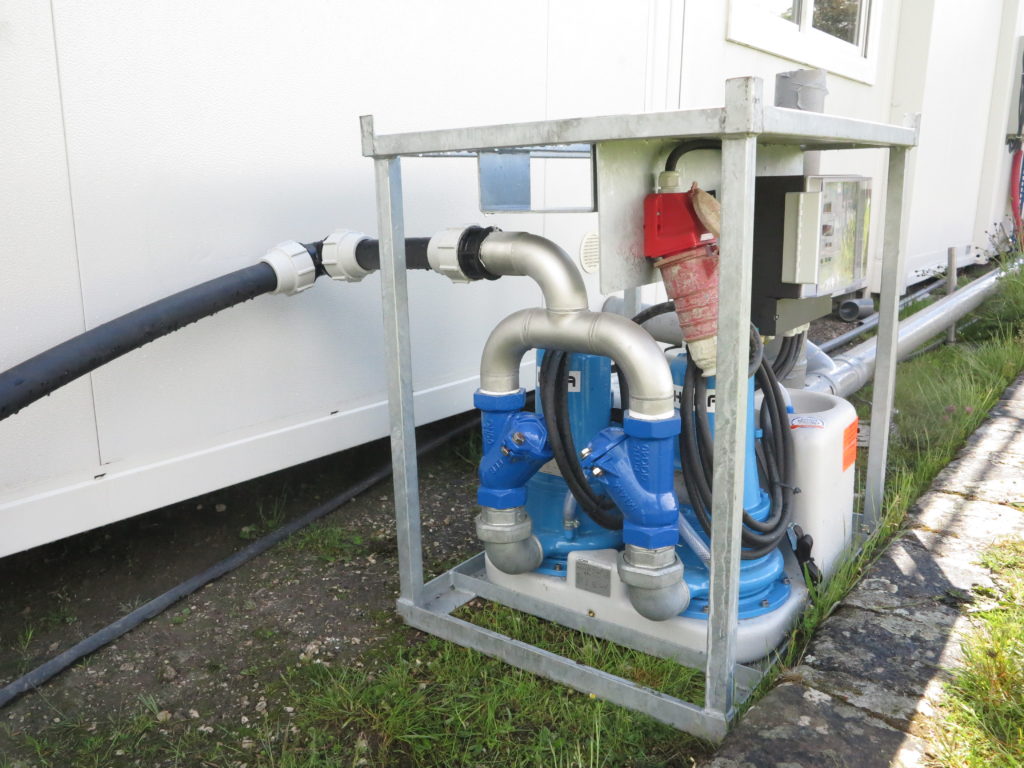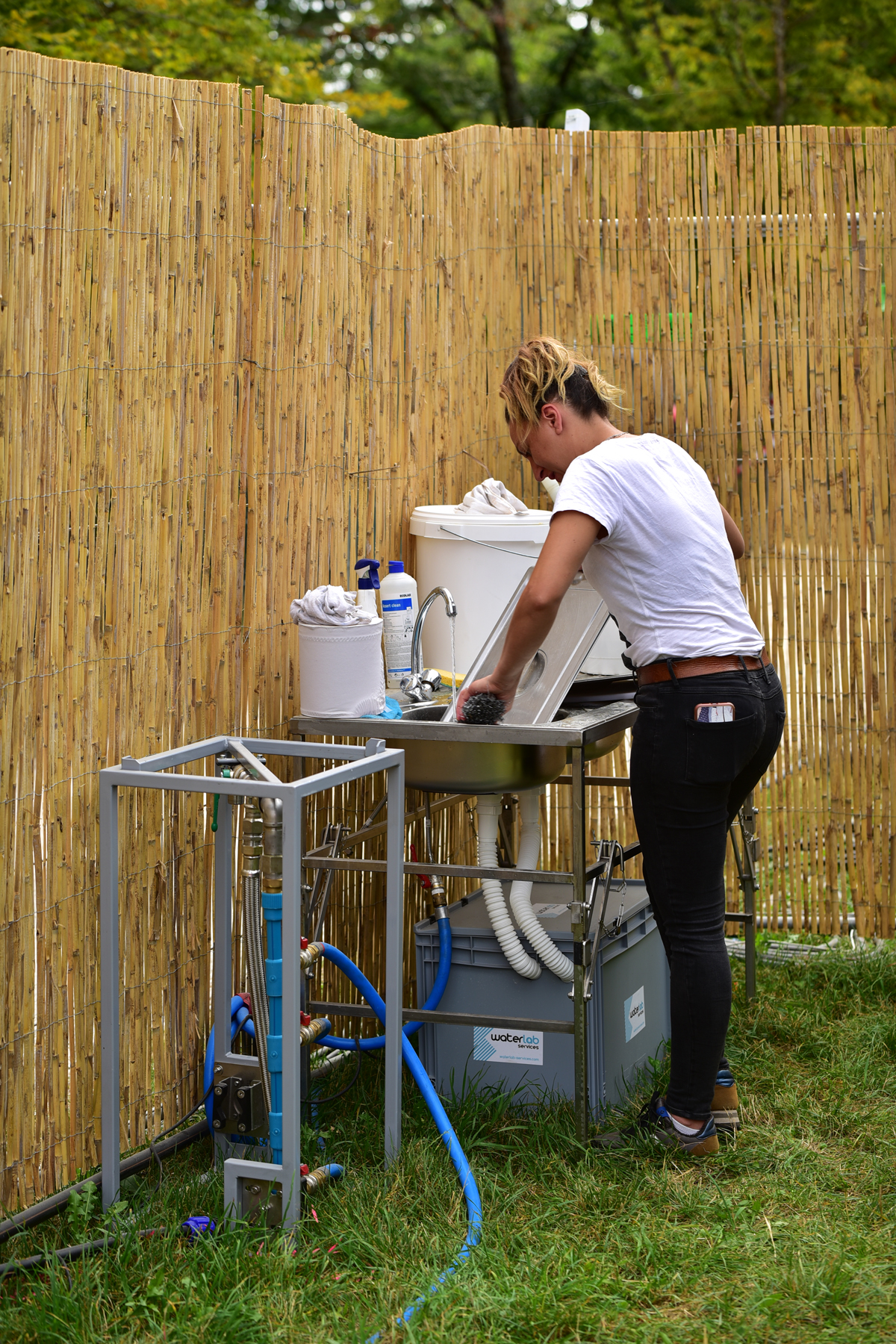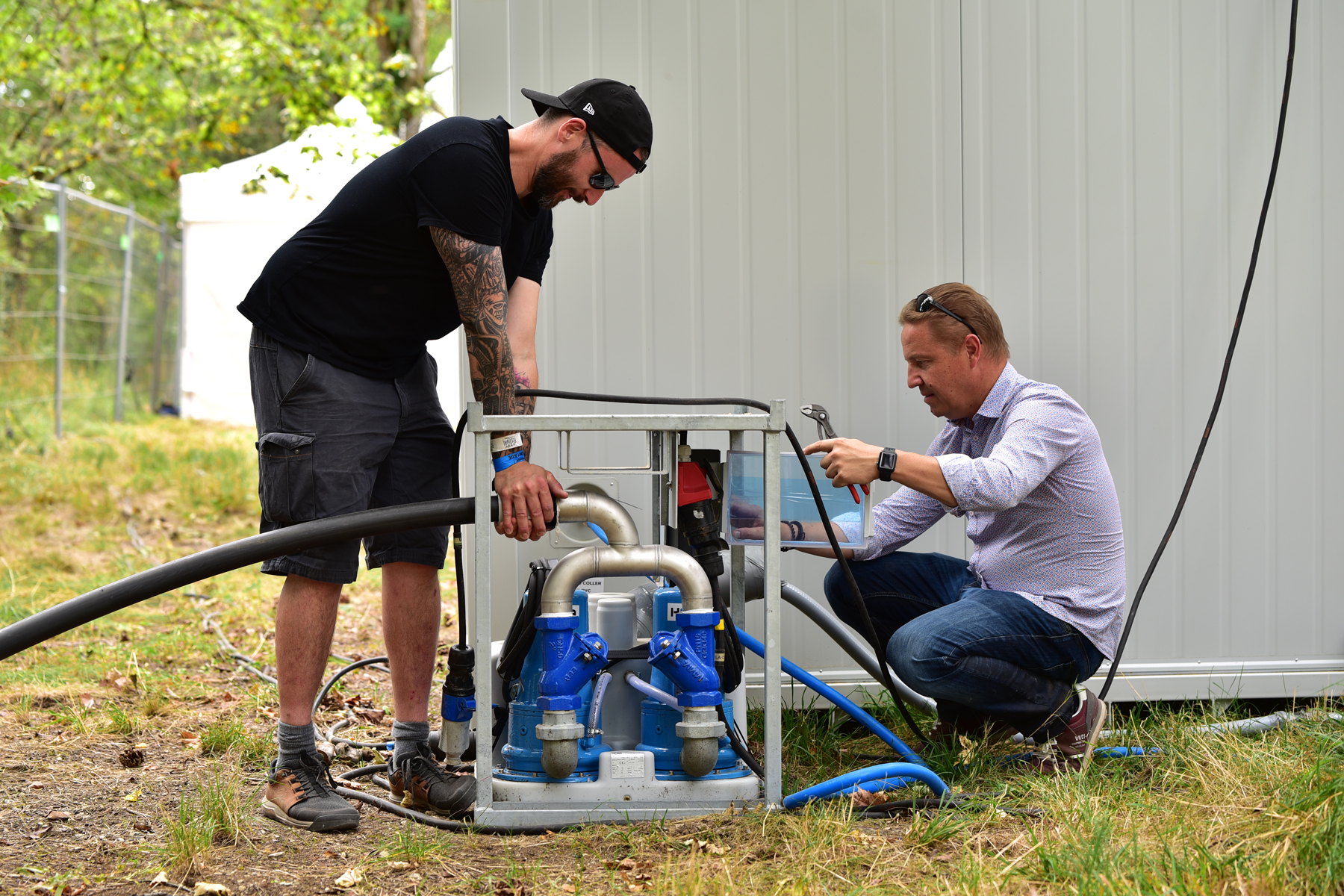Lifting pumps are generally used to pump domestic wastewater, a combination of black water (WC water), also known as sewage water, and more classic wastewater (greywater: showers, washbasins, baths, sinks, hand basins).
A lifting pump is used to pump water using a lifting action: it makes it possible to move a volume of water from a lower level to a higher level. They are generally composed of one or two interconnected lifting pumps and a command and control system.
Gravity causes the wastewater to flow from the sanitary facilities and showers into a 40 litre receptacle. The pumps activate once the receptacle has received enough wastewater to empty the container and so on and so forth.
Waterlab’s lifting pumps are capable of operating completely independently. They need no human intervention to start and stop. They start up and stop on their own, entering standby mode in the same way also.
At our company, we have also chosen to opt for a range of lifting pumps that also have a comminution function. These are known as macerating pumps. This enables the pumps to break up faeces, toilet paper and other solid matter found in wastewater. The aim of this is to make the wastewater as fluid as possible to make pumping easier.
Temporary water network
When is a lifting pump used ?

Temporary water network
Waterlab Services’ range of lifting pumps
Waterlab has several types of pump. Macerating pumps (blackwater), lifting pumps for lightly charged water (greywater), lifting pumps for clean water (mainly water from drinking fountains and washbasins). Some operate on a single-phase 230V supply and others on triple-phase 400V supply.
The flow rates of these lifting pumps vary from 5 to 25 m³/hr depending on the pump.
The discharge heads of these pumps vary between 5 and 30 mWC.
Waterlab also owns a range of lifting pumps known as “submersibles”. That means that to operate they are fully submerged in the water to be pumped. That is why they are known as “submersibles”!

Un projet à nous confier ?
Contactez-nous !
